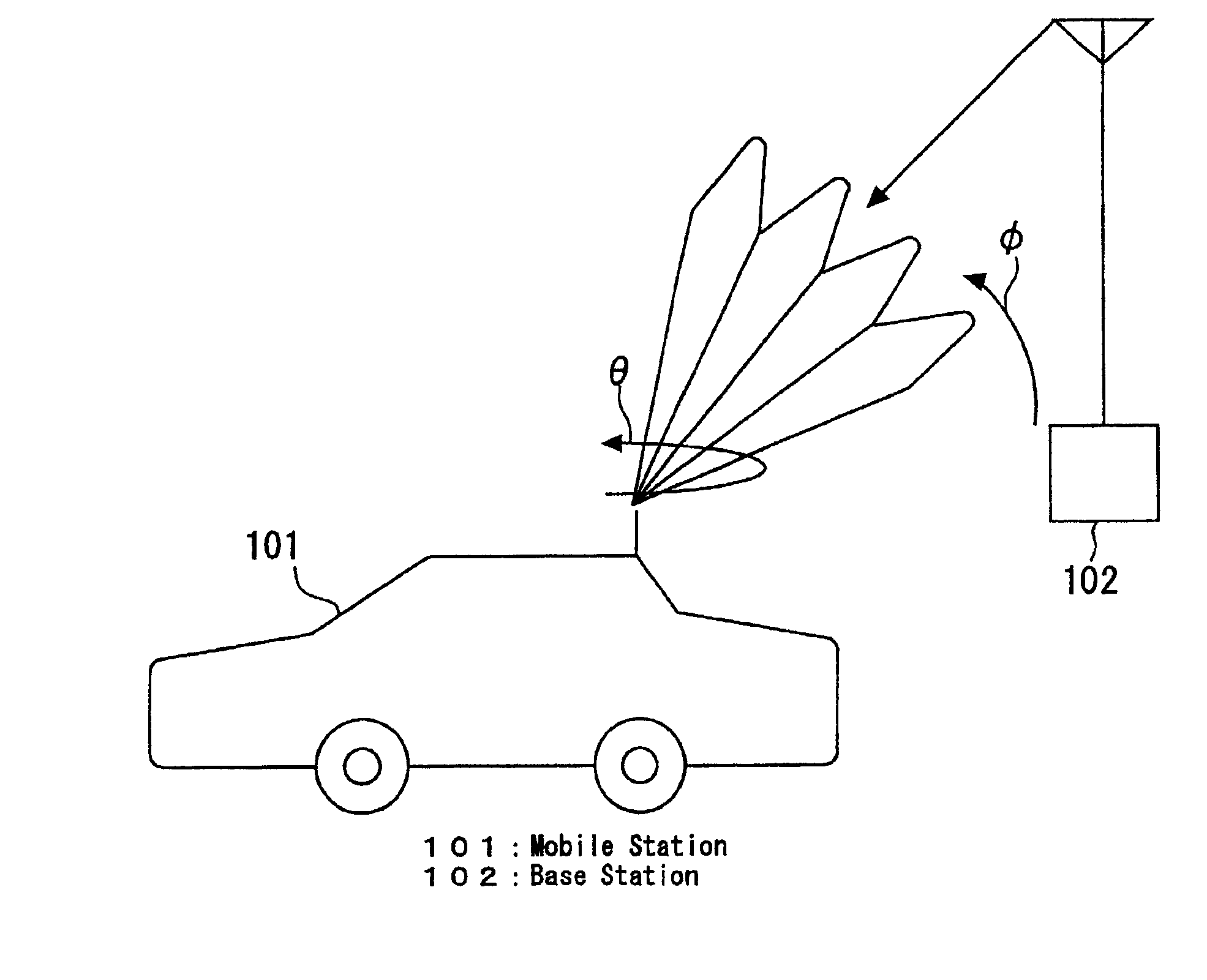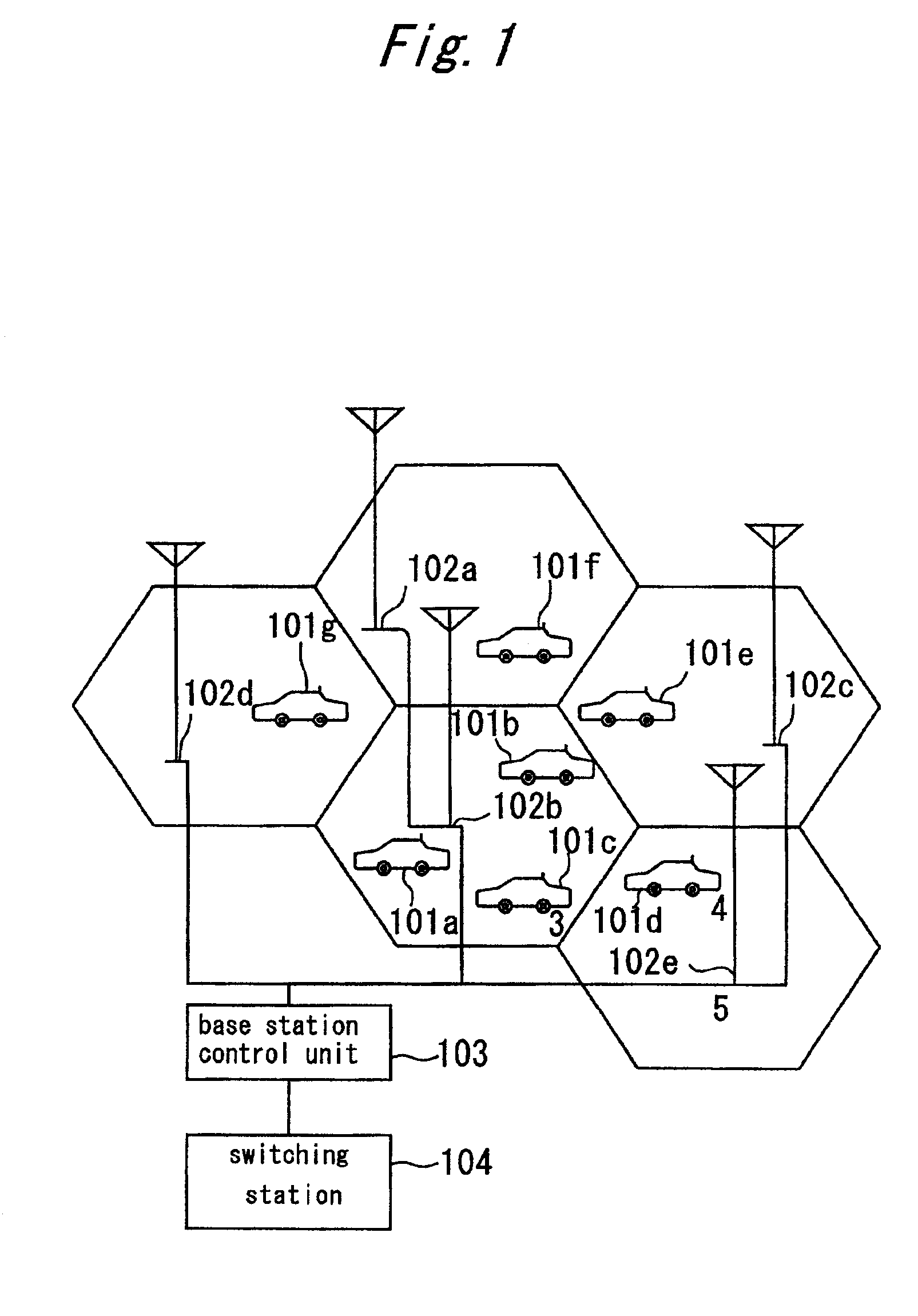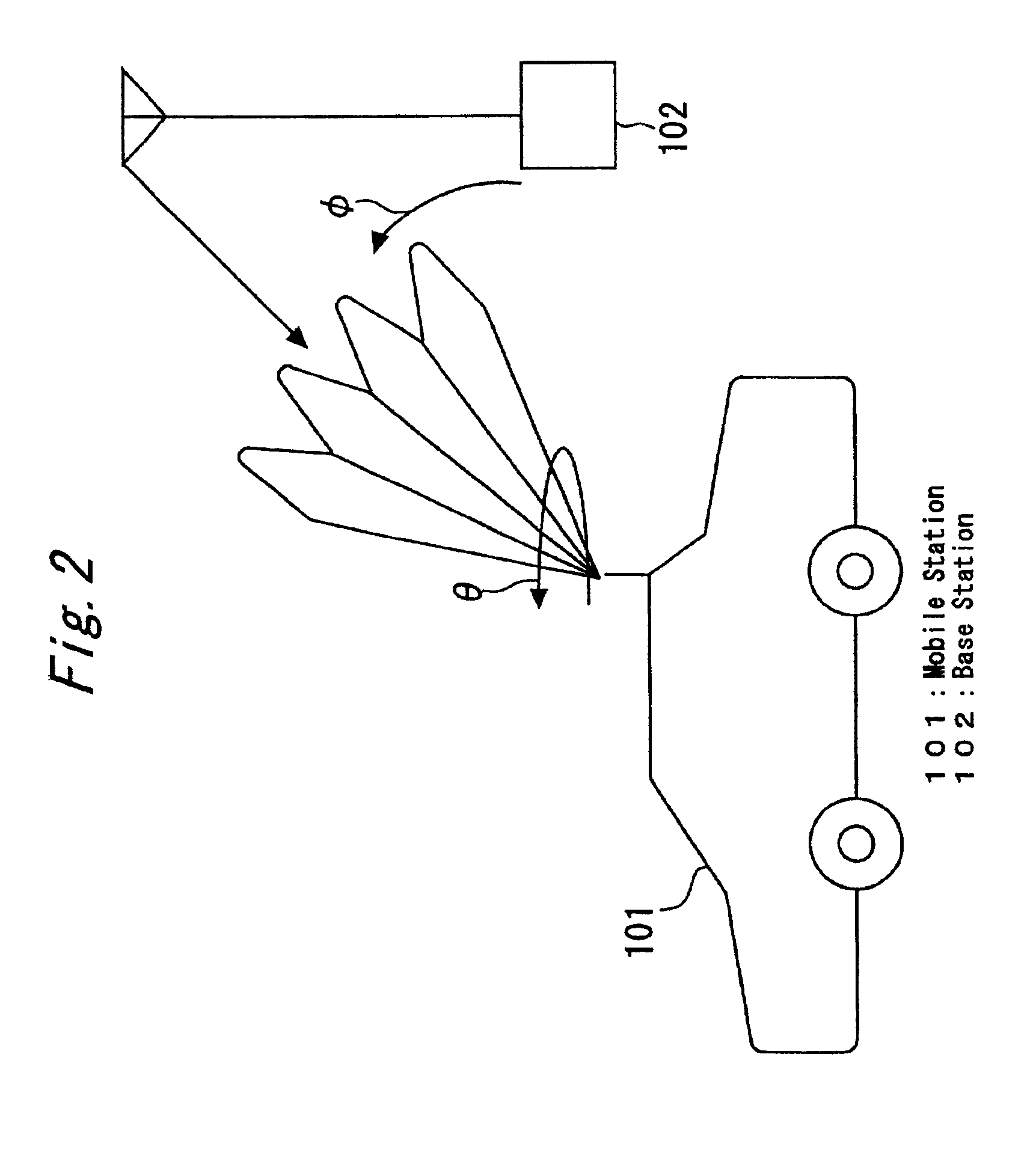Mobile radio communication system
a radio communication system and mobile technology, applied in the field of mobile radio communication system, can solve the problems becoming difficult for the mobile station to select a beam from the base station, and requiring both the omnidirectional channel and the narrow beam channel to start a speech, so as to achieve the effect of reducing the tracking tim
- Summary
- Abstract
- Description
- Claims
- Application Information
AI Technical Summary
Benefits of technology
Problems solved by technology
Method used
Image
Examples
embodiment 1
[0034]FIG. 1 shows a configuration diagram of the present mobile radio communication system. In FIG. 1, reference numerals 101a-101g denote mobile stations; 102a-102e base stations include the mobile stations 101a or the like and connect the mobile stations 101a or the like by radio wave; 103 a base station control unit controls the base stations 102 or the like; and 104 a switching station being connected with the base station control unit 103 by wire.
[0035]Next, the operation will be explained. FIG. 2 shows conceptually an example of a control in the direction of a receiving angle. In FIG. 2, the same reference numerals denote the same or corresponding parts. FIG. 3 is a flowchart showing a flow from a tracking processing to a starting of a communication in a base station. FIG. 4 is a flowchart showing a flow from a tracking processing to a transmitting in a mobile station. FIG. 5 is a sequence diagram showing a sequence from a tracking processing to a communicating state between ...
embodiment 2
[0041]On the other hand, when the visiting area base station 102 receives a reverse tracking channel from the mobile station 101, the visiting area base station 102 obtains the mobile station ID (step S0004), and then determines a transmitting direction of a beam by the same conventional method as shown in (6) of FIG. 5 and halts the irradiation operation of the narrow beam for searching (step S0005) and irradiates a narrow beam showing an end signal of a forward tracking channel by the forward tracking channel to the receiving direction as shown in (7) of FIG. 5 (step S0006).
[0042]Further, the visiting area base station 102 uses a frequency and a beam of a tracking channel without changing as shown in (8) of FIG. 5 to transmit an information channel (step S0007) and waits a receiving of an end signal of a reverse tracking channel from the mobile station 101 at the same time.
[0043]When the mobile station 101 receives an end signal of a forward tracking channel from the visiting area...
embodiment 3
[0047]In the embodiment 3, a case which the mobile station 101 becomes to a communication state with the visiting area station 102 will be explained. As shown in FIGS. 6A and 6B, an information channel between the mobile station 101 and the visiting area station 102 is constituted by a plurality of frame 200 or the like. Further, control slots 214 or the like for controlling the mobile station 101 and the base station 102, tracking slots for searching the adjacent base station 102 (hereinafter referred to as searching slot) 210 or the like and information slots for transmitting information are provided in the frame 200 or the like.
[0048]As shown in FIG. 7, while the mobile station 101 communicates with the visiting area station 102, a searching is performed between the mobile station 101 and the adjacent base station 102 by controlling a receiving direction of a narrow beam at intervals of the above searching time slots as well as the embodiment 1, and a communication of both search...
PUM
 Login to View More
Login to View More Abstract
Description
Claims
Application Information
 Login to View More
Login to View More - R&D
- Intellectual Property
- Life Sciences
- Materials
- Tech Scout
- Unparalleled Data Quality
- Higher Quality Content
- 60% Fewer Hallucinations
Browse by: Latest US Patents, China's latest patents, Technical Efficacy Thesaurus, Application Domain, Technology Topic, Popular Technical Reports.
© 2025 PatSnap. All rights reserved.Legal|Privacy policy|Modern Slavery Act Transparency Statement|Sitemap|About US| Contact US: help@patsnap.com



